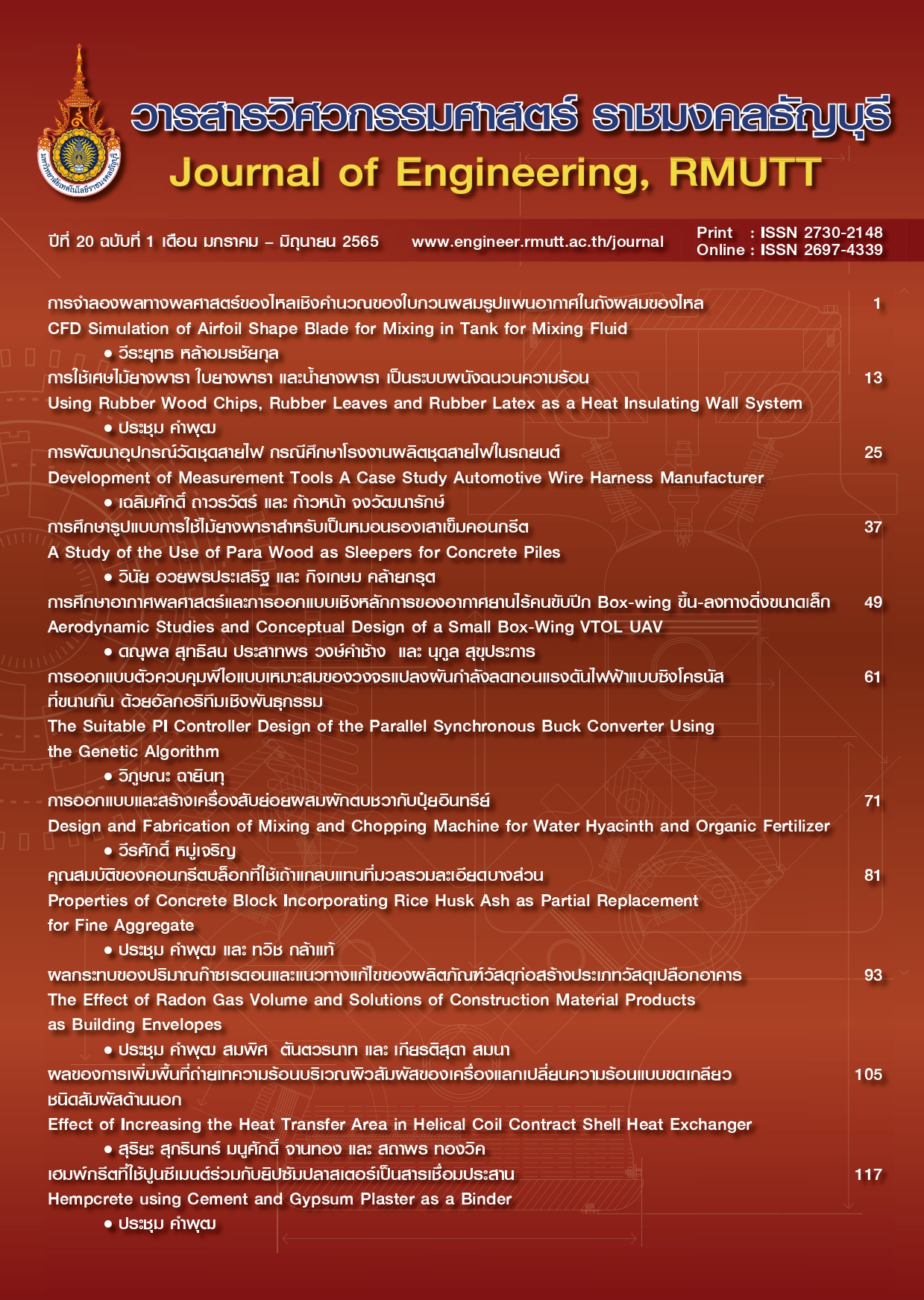A Study of the Use of Para Wood as Sleepers for Concrete Piles
Main Article Content
Abstract
The propose of this research was to find the most effective pattern of using Para wood as sleepers for prestressed concrete piles were studied structural reliability theory, statistical analysis of Para wood sleepers, statistical analysis for compressive strength perpendicular to grain, proposed algorithms for finding compressive stress perpendicular to grain and finding suitable patterns for stacking of prestressed concrete piles. Results of study showed that fifty Para wood sleepers of the mean square section of 7.0 cm in width and 1.146 m in length were sawn from tree branches and tree slabs. Two hundred forty-five Para wood specimens of square section of 5 cm in width and 15 cm in length were tested. The mean compressive strength perpendicular to grain was 105.2 ksc. The best fitted distribution was gamma. Monte-Carlo simulations together with importance sampling technique under the conditions of the acceptable failure probability for temporary structure less than 10-2 and standard error not more than 1% yielded the allowable compressive stress perpendicular to grain of 41.6 kg/cm2 which is 1.65 times higher than that of the case of normal distribution assumption. This allowable stress could be used to analyze the suitable numbers of layers and the numbers of Para wood sleepers at supports of any type of prestressed concrete piles. The maximum layers for I and square concrete piles supported by Para wood sleepers at 0.207 of the length from both ends were summarized as in the following: I22&[]22 - 24 layers, I26&[]26 - 21 layers, I30&[]30 - 18 layers, I35&[]35 - 16 layers, I40&[]40 - 14 layers.
Article Details

This work is licensed under a Creative Commons Attribution-NonCommercial-NoDerivatives 4.0 International License.
The manuscript, information, content, picture and so forth which were published on Frontiers in engineering innovation research has been a copyright of this journal only. There is not allow anyone or any organize to duplicate all content or some document for unethical publication.
References
Ouypornprasert W, Boonyachut S. Engineering properties of softwood in Thailand for structural design. Research Institute of Rangsit University. 2000. (in Thai)
Ouypornprasert W, Boonyachut S. Usage of softwood in Thailand as structural components in wood structures. Research Institute of Rangsit University. 2000. (in Thai)
Ministry of Industry.Precast prestressed concrete piles (TIS.396-2549). 2006. (in Thai)
Building Control Bureau.Standard test method for compression perpendicular to grain (DPT.1221-51). Department of Public Works and Town & Country Planning. 2008. (in Thai)
Ouypornprasert W. Calibration of building design for Thailand based on structural reliability theory. Structural design base on probability theory: EIT. 2001. (in Thai)
Ouypornprasert W. Structural design base on probability theory: EIT. 2001. (in Thai)
Ouypornprasert W. Accurate structural reliability analysis utilizing efficient integration method [dissertation]. Innsbruck: Institute of Engineering Mechanics University of Innsbruck; 1989.
Ouypornprasert W, Jirayut T. Algorithms for determination of allowable holding loads for nails and screws based on probability theory. International Journal of Materials & Structural Reliability. 2003;2:89-99.
Vereecken E, Botte W, Droogné D, Caspeele R. Reliability-based calibration of partial factors for the design of temporary scaffold structures. Maintenance Management Life-Cycle Design and Performance Structure and Infrastructure Engineering. 2020;16(4):642-58.


